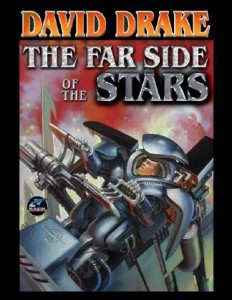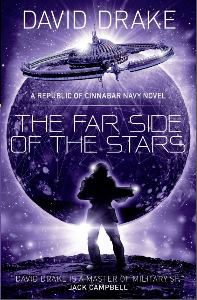One of the problems when you’re writing of either the past or the future is ‘How much should I translate?’ I don’t mean simply language: there’s a whole complex of things that people within any society take for granted but which vary between societies. (But language too: I had somebody complain that the Arthurian soldiers in The Dragon Lord talked like modern soldiers. My reaction to this was that I could write the soldiers’ dialogue in Latin, but the complainant couldn’t read it; and if I’m going to translate into English, why on Earth wouldn’t I translate into the type of English the same sort of men speak today?)
Weights and measures are a particular problem. I don’t assume that the world of the far future will use the weights and measures of today, but I’m quite certain that my inventing new systems will do nothing desirable for my story. (There are people who’re really happier for a glossary of made-up or foreign words. I’m not, though I’ll admit I still occasionally murmur to myself, “Tarzan bundolo!”)
In the RCN series Cinnabar is on the English system and the Alliance uses Metric, simply to suggest the enormous complexity I expect will exist after Mankind spreads among the stars. (Well, I certainly hope we’ll spread among the stars, but I won’t pretend I’m sanguine about our chances at the moment.)
Communications protocols are very roughly based on those of the 2nd Squadron, 11th ACR, during the period it was—I was—under the command of LTC Grayle Brookshier. There were a lot of stories about squadron and regimental commanding officers. The stories about Battle Six were all positive.
I think I should comment on the background of this novel also. Today physical travel is easier than ever before, and television takes us literally anywhere. The world is generally accessible to most people, and as a result it’s becoming homogenized. I don’t insist that this is a bad thing, but it’s a major change from the situation of a generation ago, let alone that of a hundred years in the past.
In the late 19th century a party of Russian nobles bought a South Seas trading schooner from its owner/captain, hired as captain the former mate (a man named Robert Quinton), and for several years sailed the Pacific from Alaska to New Zealand, from Kamchatka to Diamond Head. They hunted, bought curios, visited ancient ruins, and viewed native rites in a score of localities.
This sort of experience was available only first-hand and only to the exceptionally wealthy (or their associates like Quinton, who wrote a memoir of the voyage). Today anybody who watches PBS and the Discovery Channel can see everything those aristocrats saw, or at any rate as many of those things as survive.
I’ve tried as one of the themes of The Far Side of the Stars to give the feel of that former time, when travel was a risky adventure possible only for the few. While I’m glad that many–myself included–can share the world’s wonders today, I do regret the passing of the romance of former times and the fact that maps no longer have splotches marked Terra Incognita.
–Dave Drake

